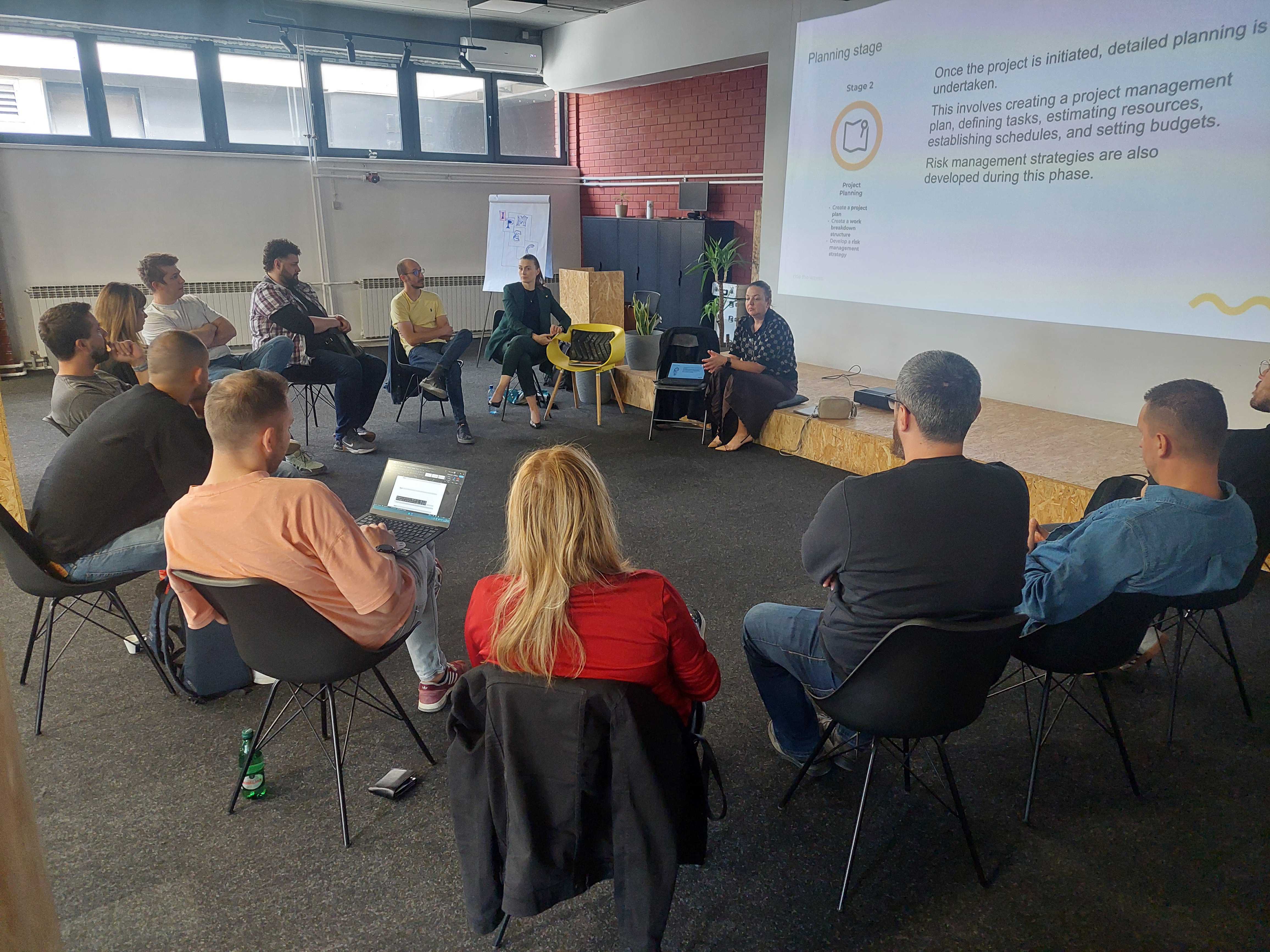September 19, 2024
Klika Leadership Academy: Developing and Empowering Leaders as a Priority
Written by: Zlatan Jovanović, Learning and Development Associate
When Satya Nadella became the CEO of Microsoft in 2014, the company was out of sync with technological trends. One of Nadella’s first moves, illustrating Microsoft’s strategic shift, was the decision to shut down its smartphone business. This was followed by refocusing the company on cloud technologies, leading to Azure's tremendous success. A series of strategic decisions followed, and ten years into Nadella's leadership, Microsoft's stock had risen by more than 1000%, with the company's value estimated at $3 trillion.
“He brought a new culture, new enthusiasm,” said Michael Cusumano, a management professor at MIT, to the Los Angeles Times.

Undeniably, good leadership has a huge impact on a company’s success, and this success story illustrates how bold and well-calculated strategic decisions can steer a business in the right direction.
But what does it actually mean to be a good leader? It seems easy to conclude when looking retrospectively at hard indicators like profit and stock prices tied to visible decisions, like shutting down entire divisions of the company. But what about lower-level management, which is not part of the decision-making structure for such significant strategic moves? What does being a good leader mean in their daily work?
Mandachian and colleagues in their 2017 article “Leadership Effectiveness Measurement and Its Effect on Organizational Outcomes” mention that conceptualizing leadership effectiveness is quite challenging. It can rely on numerous indicators and outcomes, such as the ability to establish effective group processes, group cohesion, collaboration, and motivation. Not only are these indicators not always immediately available, but they also don't clearly tell us what makes a good leader in daily work.
The lack of directly available exact metrics is at the core of the problem for an engineer recognized by the company as a potential leader and placed in that position. The core job, which until recently involved exclusively software development, now shifts to managing people, and the end result of the work is no longer as easily measurable. On an individual level, recognizing and successfully navigating this change is crucial to succeeding in the new role. On a company level, what separates smart, strategic action from short-sightedness is realizing that the job isn’t done by simply selecting someone for a position. No matter how much thought and care went into deciding who will be the manager, if we don’t continue to invest in that person, over time we can’t expect the same quality of work, let alone improvement.

How Klika Does It
Recognizing the importance and complexity of leadership roles, as well as the necessary and crucial role of investing in their development, Klika launched the Klika Leadership Academy. This specialized educational program focuses on empowering and improving employees in management positions at various levels within the company.
The design of the entire program was approached thoroughly and carefully. During the first half-year, extensive research was conducted, including interviews with all individuals in management positions, administering company-wide surveys, and analyzing documentation. The result is a formalized and structured program that seamlessly fits into daily work obligations while addressing the real needs of those attending.
The academy lasts three years. After completing one educational year, participants receive a certificate and are eligible to advance to the next year. Klika is an agile company, so naturally, its educational programs are also based on the same principles. From the beginning, the guiding idea in the design and implementation of the Academy was the usefulness and relevance of the content, and that is impossible to fully achieve without flexibility. When participants advance to the next year, the content is revised and adapted to the current situation for the new generation. This can involve adding or removing thematic units or entire modules.
The main activity consists of full-day thematic modules held throughout the calendar year. Through interactive work, group discussions, and lectures, participants work on competencies that make their roles easier. With each subsequent year, the complexity of the content increases. Starting with fundamental skills like communication in the first year, by the second and third years, we are discussing ways to lead the company through case studies based on real projects and clients Klika has worked with or is working with.

The Program and Its Results
We recognized that there are topics that cannot be addressed in a group and require an individualized approach. In addition to the modules, all participants undergo thorough psychological profiling to better understand their capacities and areas for development. Following this, through individual work, they receive guidance, support, and resources for continued self-improvement.
Another activity of the Academy includes team-based thematic workshops where leaders work within the teams they lead. For example, last year we focused on conflict resolution skills. In this way, almost the entire company is indirectly involved in the activities of the Academy. Instructors and experts are engaged both internally and externally. We generally hire external experts for skills and topics that can be taught without an in-depth understanding of Klika’s context or even the entire industry. When it comes to content where knowledge of the company from the inside is essential, we rely on the knowledge and experience of Klika's internal experts.
The entire Academy is a logistically challenging initiative to implement, involving collaboration between several departments within the company and various external partners.
The results are evident. During the program, we continuously monitor progress, and at the end of the year, we evaluate the entire process. Participants report extremely high satisfaction with the Academy and find it useful both individually and for the company. They’ve made changes they attribute to attending the Academy program and have improved their leadership skills. Ultimately, the Academy’s work is not one-directional. We regularly collect feedback from participants on the program’s functioning and on the overall company environment.

Leadership over marketing
Who do we look up to when seeking examples of leadership we want to emulate? When someone is stepping into a managerial role for the first time and wants to learn how to excel in it, their initial search will likely lead them to Jeff Bezos, Mark Zuckerberg, or Satya Nadella, as mentioned earlier in this text. The people leading tech giants are not just employees; they are also marketing tools used to create a desirable perception of the brand. Their faces and stories are omnipresent in the public sphere. While they might indeed be great leaders, it’s practically impossible to know who is behind the persona portrayed in the media.
In contrast to distant, abstract examples that often lack practical value, through the Klika Leadership Academy program, we strive to provide accessible and contextualized tools, resources, and space to help people improve. We don’t offer a one-size-fits-all formula for what it means to be a good leader. Instead, through a process of co-creation, together with people in various leadership positions who attend the Academy, we continuously search for an answer to the question: what does it mean to be a good leader?
Throughout this process, a community of leaders has emerged, making Klika a place where a manager’s first thought in a challenging situation isn’t, “What would Elon Musk do?” but rather, “What would my colleagues on other projects at Klika do?”
Industries
Expertise
Android
iOS
Java
Javascript
.Net
Ruby
Python
C/C++
Flutter
Angular
Blockchain
© 2025 Klika d.o.o.